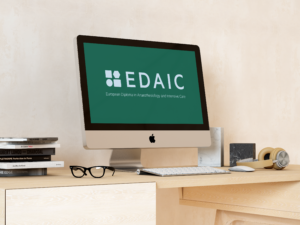Newsletter 2022
Newsletter February 2022: A step forward in loco-regional anaesthesia safety
Marc Giménez-Milà MD, PhD, EDAIC, EDIC. Consultant in Anaesthesia and Intensive Care. Hospital CLINIC de Barcelona.
We would certainly agree that clinical experiences encountered throughout specialist training are imprinted in our own memory. In my case, one of these moments was the diagnosis of an epidural haematoma in a patient with an epidural catheter for postoperative analgesia. Following accidental epidural catheter removal, the patient developed paraplegia which led to clinical suspicion that was, unfortunately, confirmed by emergent Magnetic Resonance Imaging. Although relatively rare, with an incidence of 1 in 168000 in obstetrics, an epidural haematoma is accompanied by severe neurological disability despite prompt diagnosis and treatment (1). A devastating complication, which is precisely one of the motivations of the recently published guidelines in EJA this February by Kietaibl S et al (2) in a combined effort from ESAIC and ESRA. In the following text, we will try not to reveal all findings while we expose the headlines of selected recommendations on the performance of regional anaesthesia in patients taking antithrombotic drugs. In any case, we would like to have the full article marked as a reference text for all clinical anaesthesiologists, especially those practising loco-regional anaesthesia.
The ambitious plan to go beyond time interval recommendations before and after regional technique or catheter removal in order to reduce the risk of haematoma in patients taking antithrombotic agents (3) is well articulated with the proposed final 40 recommendations. The authors analyse whether the time interval should be modified according to different settings, which include prophylactic and therapeutic dosing of antithrombotic drugs, combinations of drugs, assessment of bleeding risk scores, drug measurements and ultrasound guidance to perform the block.
The panel of experts disclose that recommendations are mostly based on clinical studies with limitations in number and quality with a relatively low grade of evidence. A wide range of studies was included comprising randomised trials, retrospective studies and case reports on surgical and obstetric patients older than 16 with a total of 212 references.
Blocks are classified according to bleeding risk in 2 groups: neuroaxial / deep nerve blocks, and a second one with all superficial nerve blocks that are considered to be compressible and unlikely to be complicated with haematoma. The first group of blocks (i.e. epidural, thoracic paravertebral, psoas compartment, deep cervical plexus) need a specific time interval relative to each antiplatelet and anticoagulant drug. These recommendations are mainly based on pharmacokinetic parameters such as t1/2; for low dose drugs twice t1/2 are recommended while high dose drugs 4 to 5 times t1/2 are encouraged. However, these time intervals can vary according to renal function and for an eventual traumatic puncture. The use of ultrasound to perform the blocks was not considered a reason to modify time intervals.
While we wait for more studies on nerve blocks with less clinical experience (Erector spinae plane, pericapsular nerve group) and direct oral anticoagulants, these guidelines will provide knowledge that can be incorporated in daily clinical practice to reduce haemorrhagic events after neuroaxial or peripheral nerve blocks.
References:
- Ruppen W, Derry S, McQuay H, Moore RA: Anesthesiology. 2006, 105: 394-399.
- Sibylle Kietaibl, Raquel Ferrandis, Anne Godier, et al. European Journal of Anaesthesiology. DOI:10.1097/EJA.0000000000001600
- Nishimura RA, Otto CM, Bonow RO, et al. Circulation 2017; 135:e1159–e1195.











